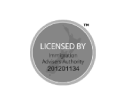So, you’re taking the plunge and migrating to Australia for work – fantastic! The land Down Under offers incredible opportunities, a laid-back lifestyle, and stunning scenery. But even with your experience and global mindset, navigating a new workplace culture can be tricky. To help you prepare, let’s delve into some common workplace culture shocks you might encounter in Australia and, more importantly, how to handle them.
1. “No Worries, Mate”: The Casual Communication Style
Australians are known for their relaxed and informal communication style. This can be a refreshing change, but it can also catch you off guard if you’re used to more formal environments.
- The Shock: Expect a lot of “mates,” “no worries,” and light-hearted banter. Meetings might start a few minutes late, and the dress code is generally more casual than you’re used to, particularly in tech and creative industries. Formality is typically reserved for dealings with external partners and customers.
- The Solution: Embrace the informality! Don’t be afraid to use “mate” in your conversations. However, be mindful of the context – reserve the slang for internal communication and be more professional when dealing with clients. A good rule of thumb: mirror the communication style of your colleagues. If you’re unsure, start slightly more formal and adjust as you get a feel for the office environment. It’s also useful to understand that “no worries” often means “you’re welcome” or “that’s okay,” as explained by Oz Kiwi Helps.
2. Directness with a Smile: Honest Feedback and Opinions
Australians value honesty and directness, but they typically deliver it with a friendly and approachable demeanor.
- The Shock: You might receive direct feedback on your work or ideas, even if it’s critical. This can be unsettling if you’re used to more sugar-coated approaches. Don’t mistake this directness for rudeness; it’s simply a cultural norm. As discussed in an article from the Australian Government about settling into Australia after migrating, understanding communication nuances can significantly improve your workplace integration.
- The Solution: Try to separate the message from the delivery. Focus on the content of the feedback and don’t take it personally. View it as an opportunity to learn and improve. When giving feedback yourself, be equally direct but always maintain a respectful and positive tone. A little self-deprecating humor can also go a long way.
3. Work-Life Balance: It’s Actually Respected
Australia takes work-life balance seriously. It’s not just a buzzword; it’s a deeply ingrained cultural value.
- The Shock: Expect colleagues to leave work on time, prioritize family commitments, and generally avoid excessive overtime. You might even be subtly discouraged from working too hard! Some might view it as you thinking you’re better than them .This can be a significant shift if you’re coming from a culture that glorifies long hours. According to a report by HAYS recruitment, prioritising work-life balance is crucial for employee retention and overall productivity in the Australian workforce.
- The Solution: Embrace it! Take advantage of the opportunity to enjoy a more balanced life. Don’t feel pressured to work overtime or respond to emails outside of work hours. Participate in social activities with colleagues and explore your surroundings. You’ll be happier and more productive in the long run.
4. Egalitarianism: Hierarchy Light
Australian workplaces tend to be more egalitarian than hierarchical.
- The Shock: You might find that titles are less important, and everyone is encouraged to contribute ideas regardless of their position. Managers are often approachable and participate in team activities. Access to senior executives is more common than you might expect.
- The Solution: Treat everyone with respect, regardless of their seniority. Don’t be afraid to voice your opinions and ideas, but always be respectful of others’ perspectives. Build relationships with colleagues at all levels of the organization. As discussed in an article from the Australian Institute of Management, effective leadership in Australia involves fostering collaboration and empowering team members.
5. The “Tea Break”: Socializing is Key
Tea and coffee breaks are an integral part of the Australian workday.
- The Shock: You might find that colleagues regularly gather for tea or coffee, and these breaks often involve informal chats and socializing. It’s not just about caffeine; it’s about building relationships and fostering a sense of community. The Australian Human Resources Institute (AHRI) promotes social interaction and team building activities as essential components of a healthy and productive workplace.
- The Solution: Participate in tea breaks and use them as an opportunity to connect with your colleagues. Don’t be afraid to join in the conversations and share your own experiences. It’s a great way to build rapport and integrate into the team.
6. Friday After-Work Drinks: A Regular Ritual
Friday after-work drinks are a common social activity in Australian workplaces.
- The Shock: Many teams will head to a local pub or bar after work on Fridays for a few drinks and some social time. This is a great way to unwind after a long week and build camaraderie.
- The Solution: Try to attend Friday after-work drinks occasionally. It’s a great way to get to know your colleagues outside of the office environment and build stronger relationships. However, be mindful of your alcohol consumption and remember that it’s still a professional setting.
7. Multiculturalism: A Melting Pot of Ideas
Australia is a highly multicultural country, and this is reflected in its workplaces.
- The Shock: You’ll likely work with people from all over the world, each with their own unique perspectives and experiences. This can be incredibly enriching, but it can also present communication challenges. The Department of Home Affairs highlights Australia’s commitment to cultural diversity and its positive impact on the economy and society.
- The Solution: Be open to learning about different cultures and perspectives. Be patient and understanding when communicating with people who have different communication styles. Embrace the diversity and use it as an opportunity to broaden your horizons. Cultural awareness training, as offered by Diversity Council Australia, is helpful.
Conclusion
Moving to a new country and starting a new job is a big step. By understanding and preparing for these potential culture shocks, you can navigate the Australian workplace with confidence and make the most of your experience. Remember to embrace the informality, be direct but respectful, prioritize work-life balance, and celebrate the diversity around you. Good luck, mate!










